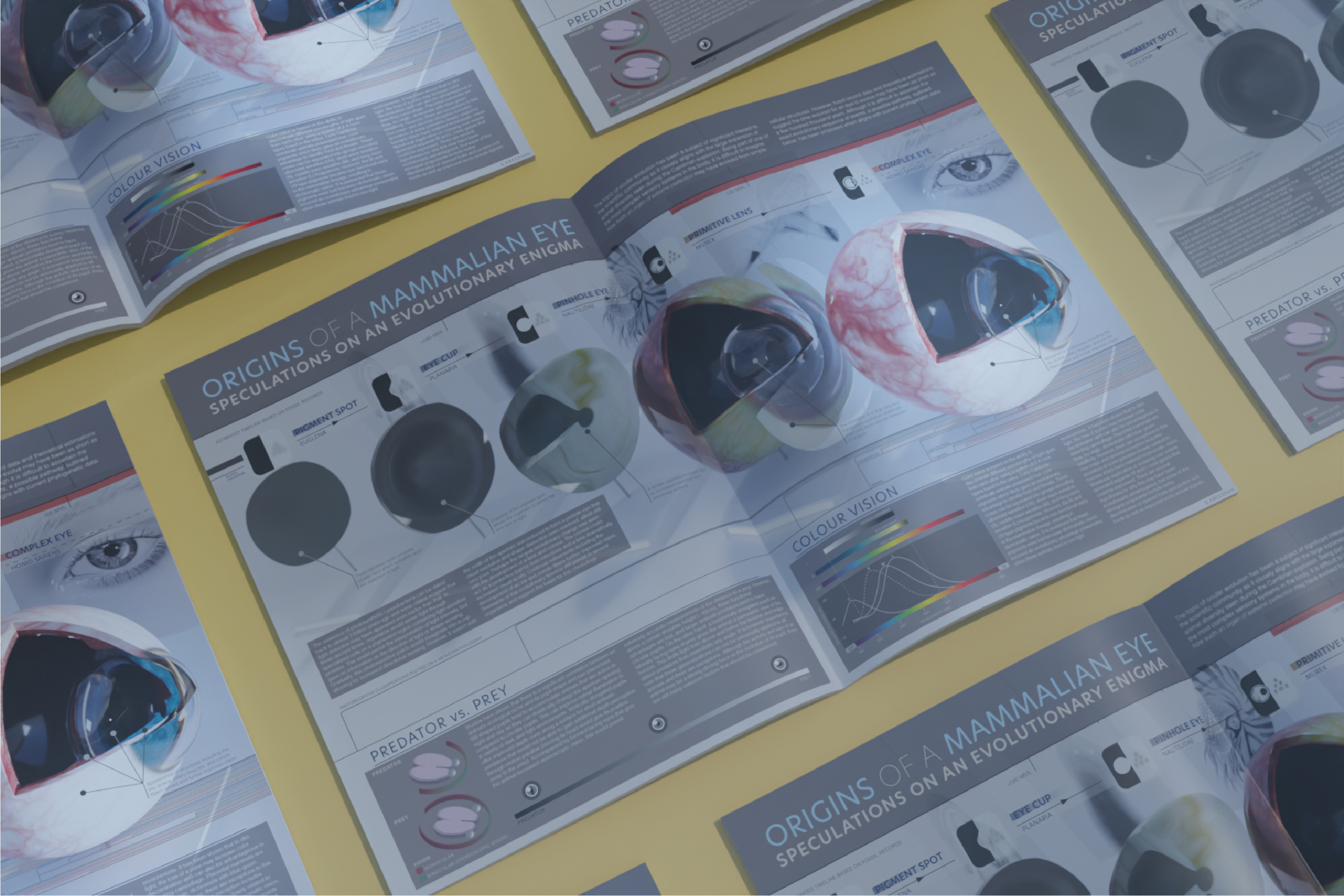
Client
Jodie Jenkinson
Year
2020
Media
Adobe Illustrator
Blender 3D
Procreate
Audience
Educated Lay Public
About
This visualization is a two-page spread educational graphic about the evolution of the eye and it's structures designed for a scientific magazine. The purpose of this piece is to share recent and up-to-date research on how the eye may have evolved over time. Multiple different media were used to explore this complex topic in an approchable package.
Final infographic
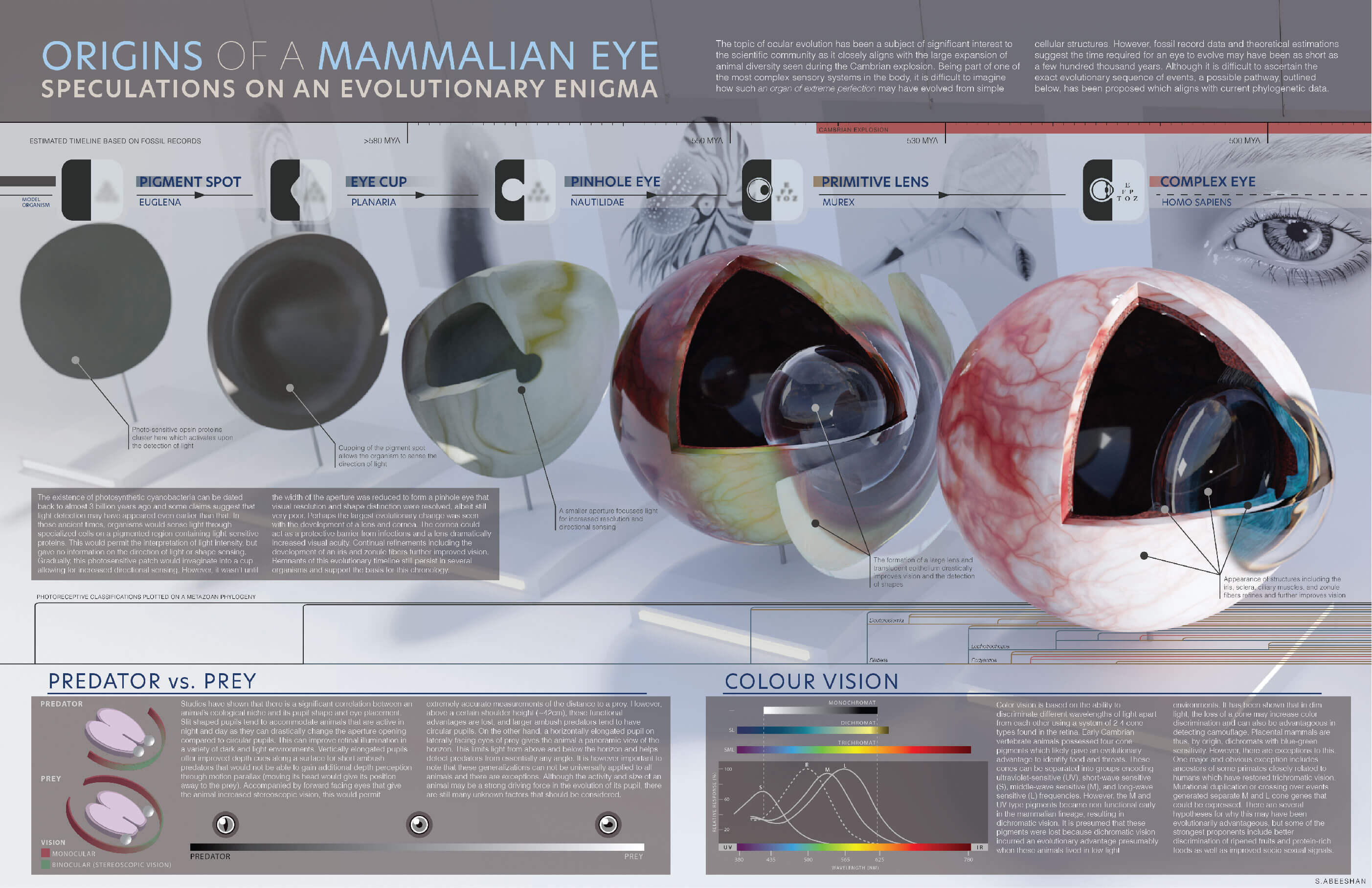
Process
Brainstorming & Research
Planning was done with Invision and involved creating an inspiration board and brainstorming different ways this visualization could be layed out. Any and every idea was thrown on this board which eventually led to a simple layout depicting the different evolutionary stages of the eye. Based on this layout, research was done to learn more about this topic, how this could be visualized, and what type of information was important to include.
Planning and Research
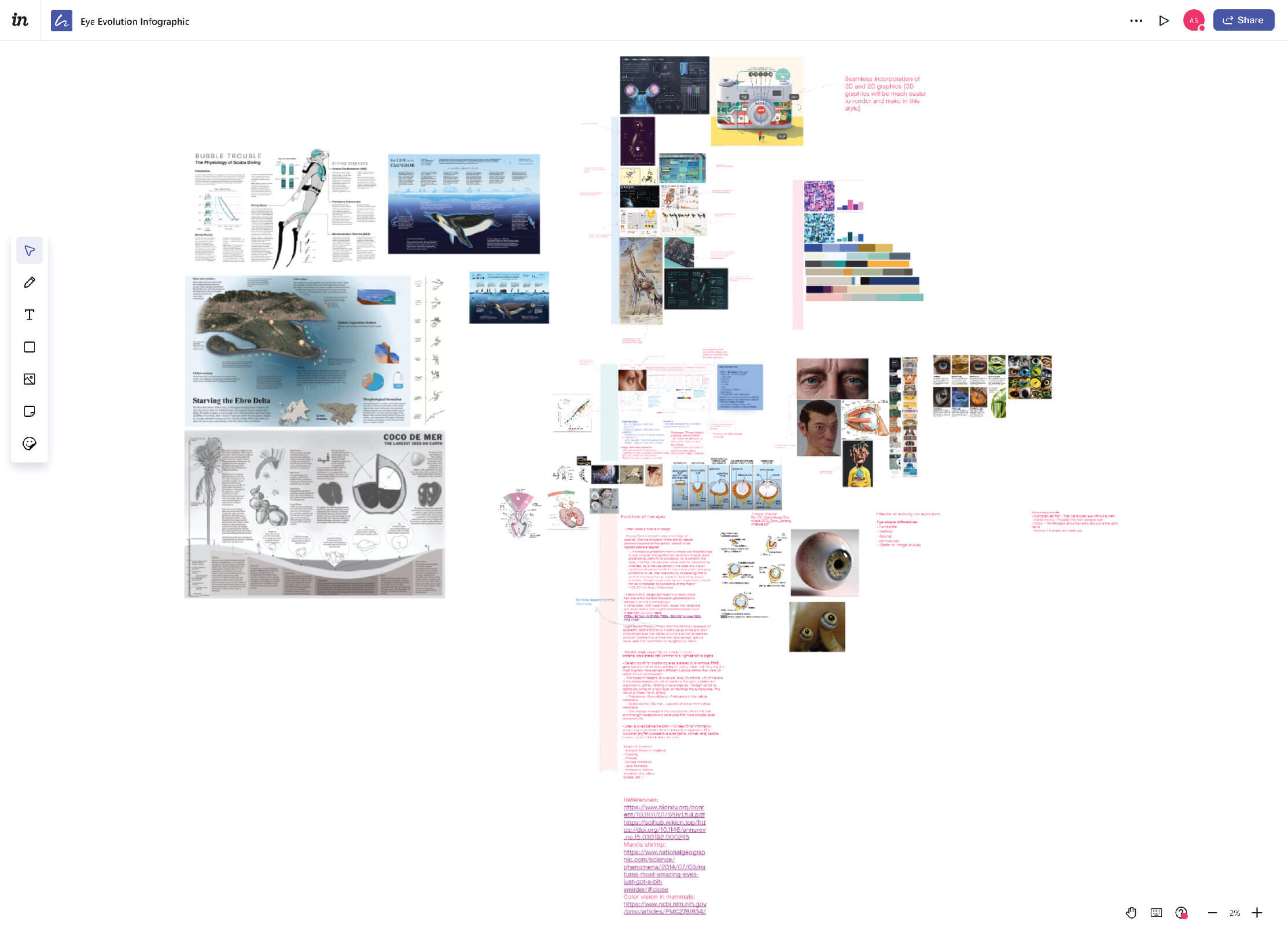
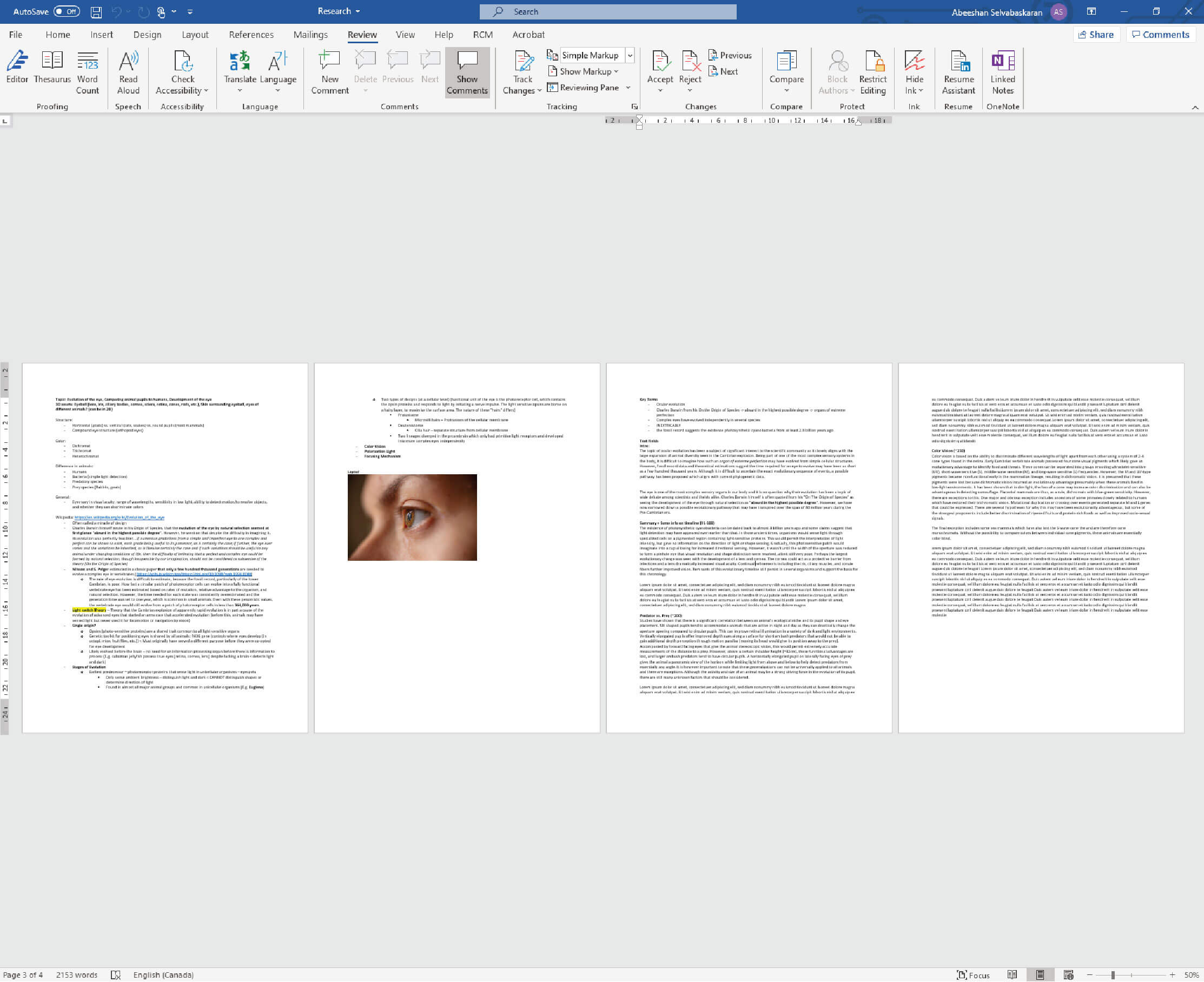
Initial Layout Idea
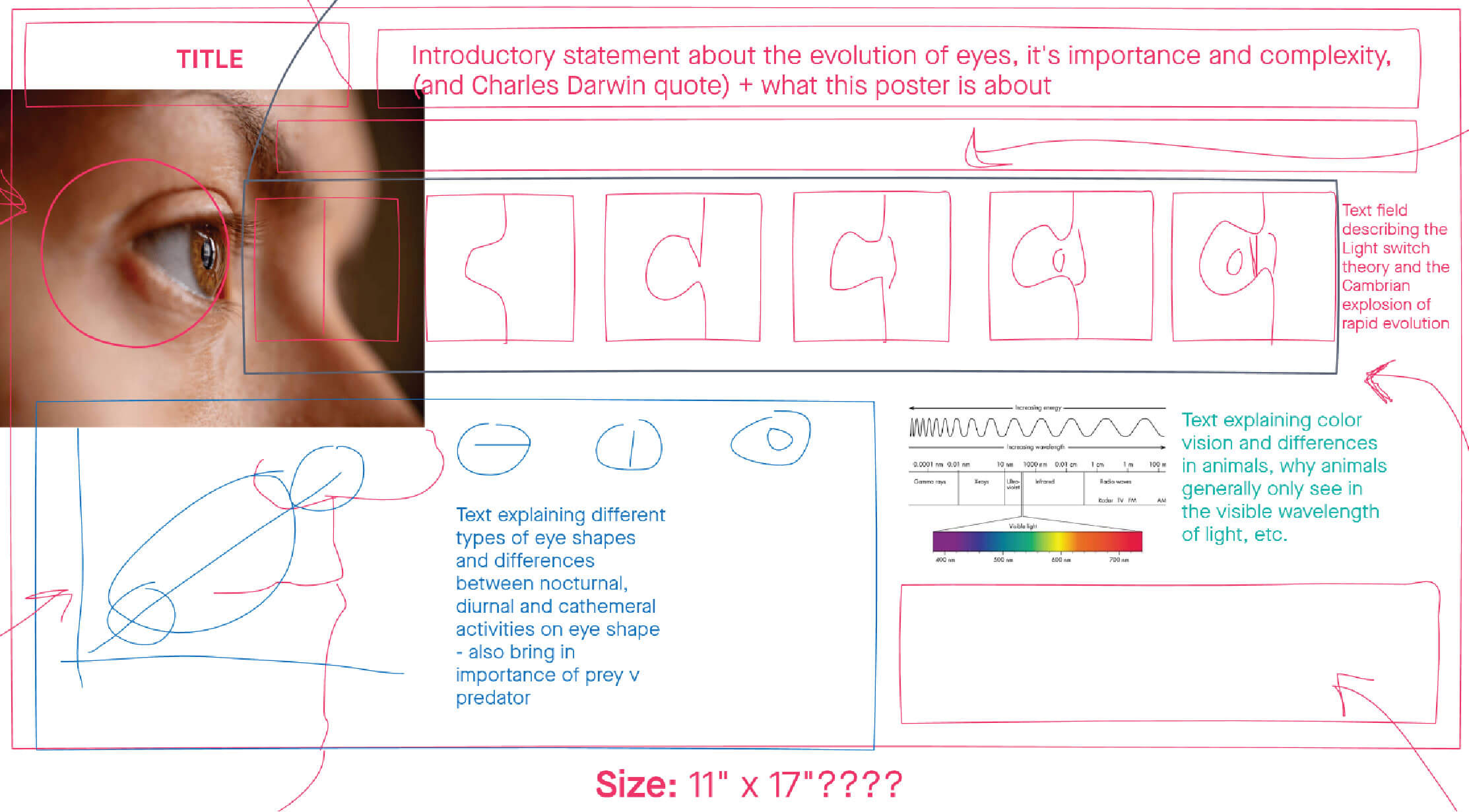
Layout Revision
Over 10 different drafts were created in the process of designing this information graphic. Multiple revisions by professors and fellow students were conducted before settling on a final draft. The final design used a combination of simple iconagraphy, detailed 2D illustrations, and 3D models to protray a complex but approachable graphic.
Revision of Layouts

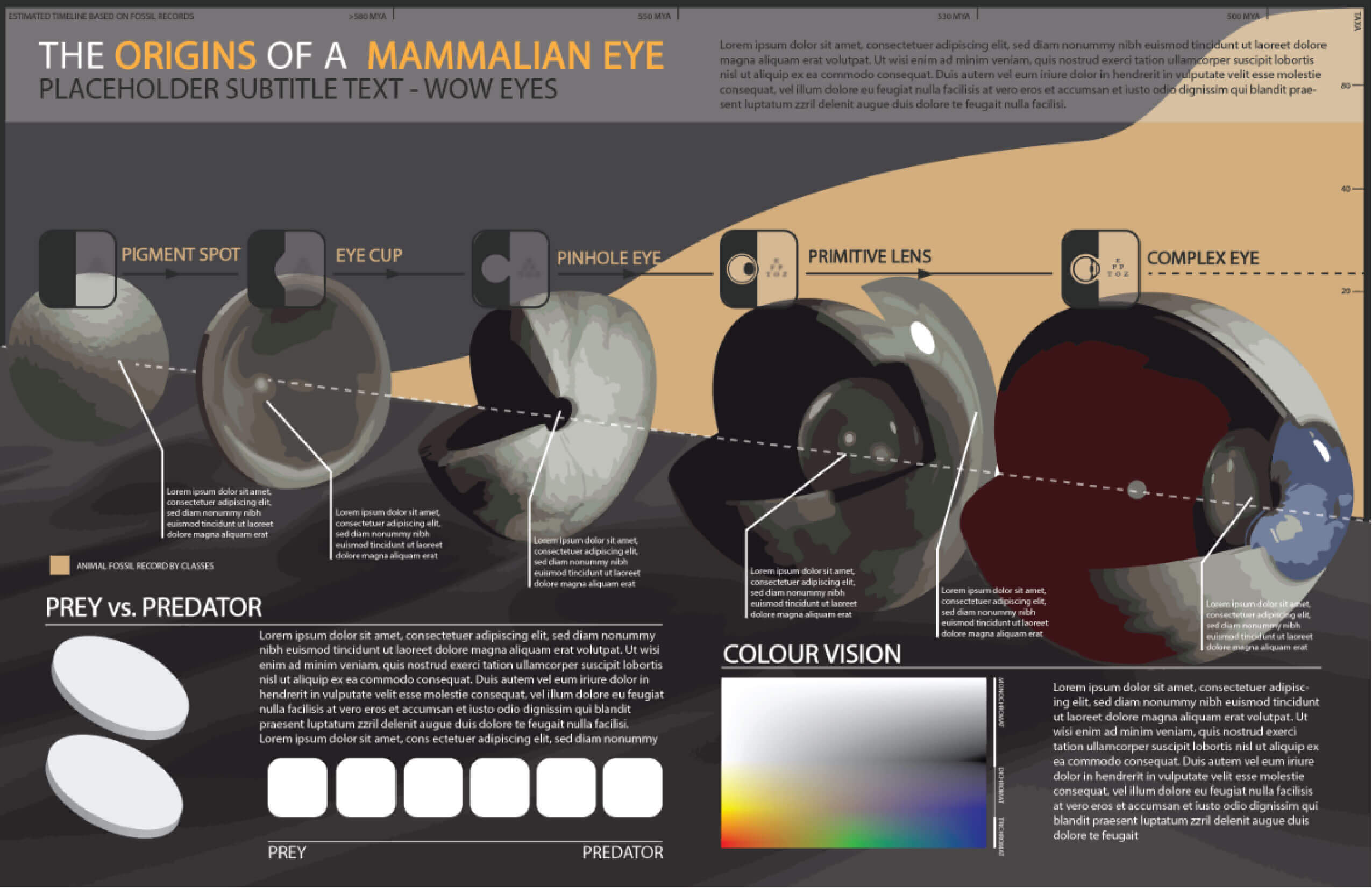
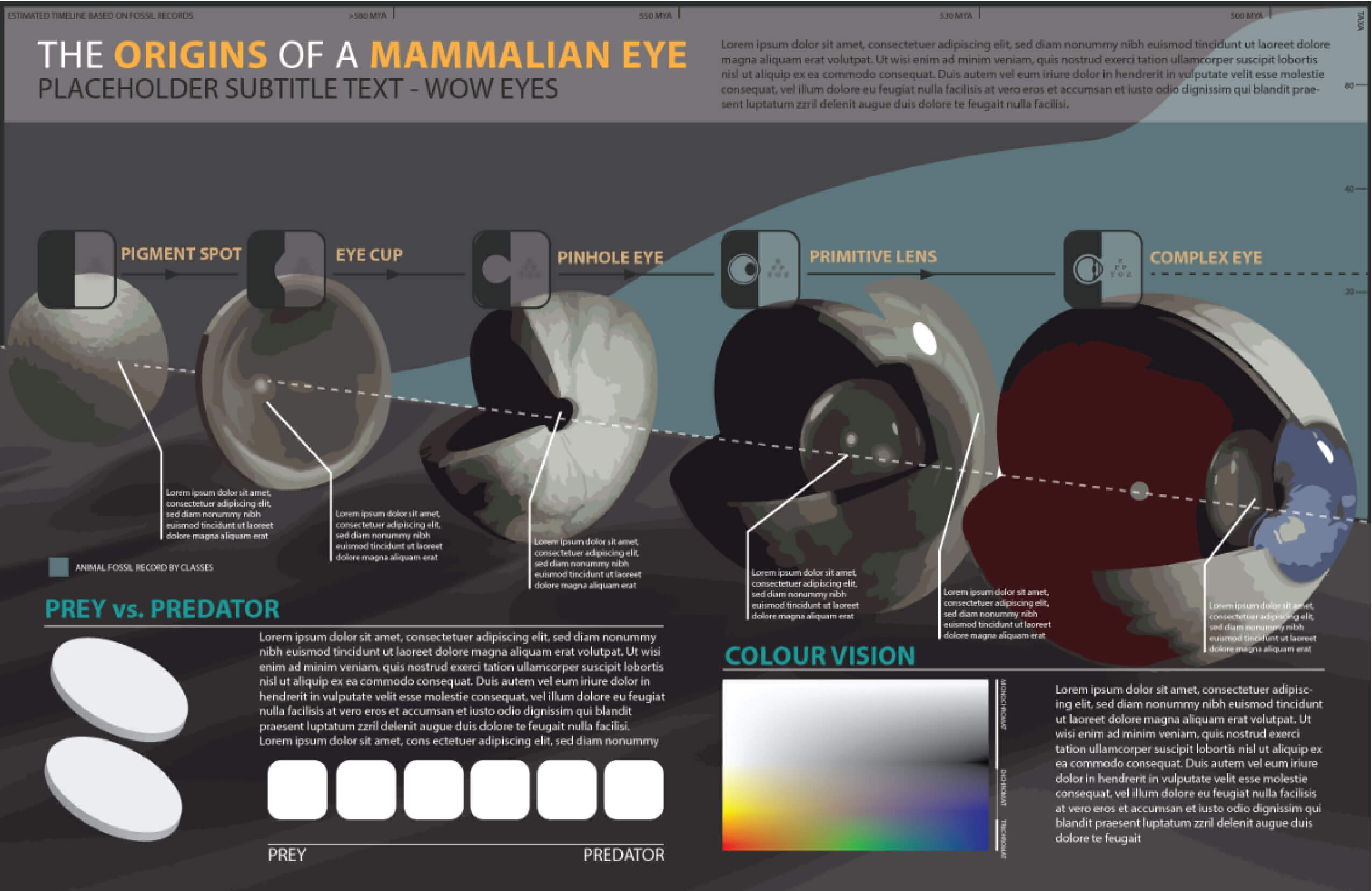
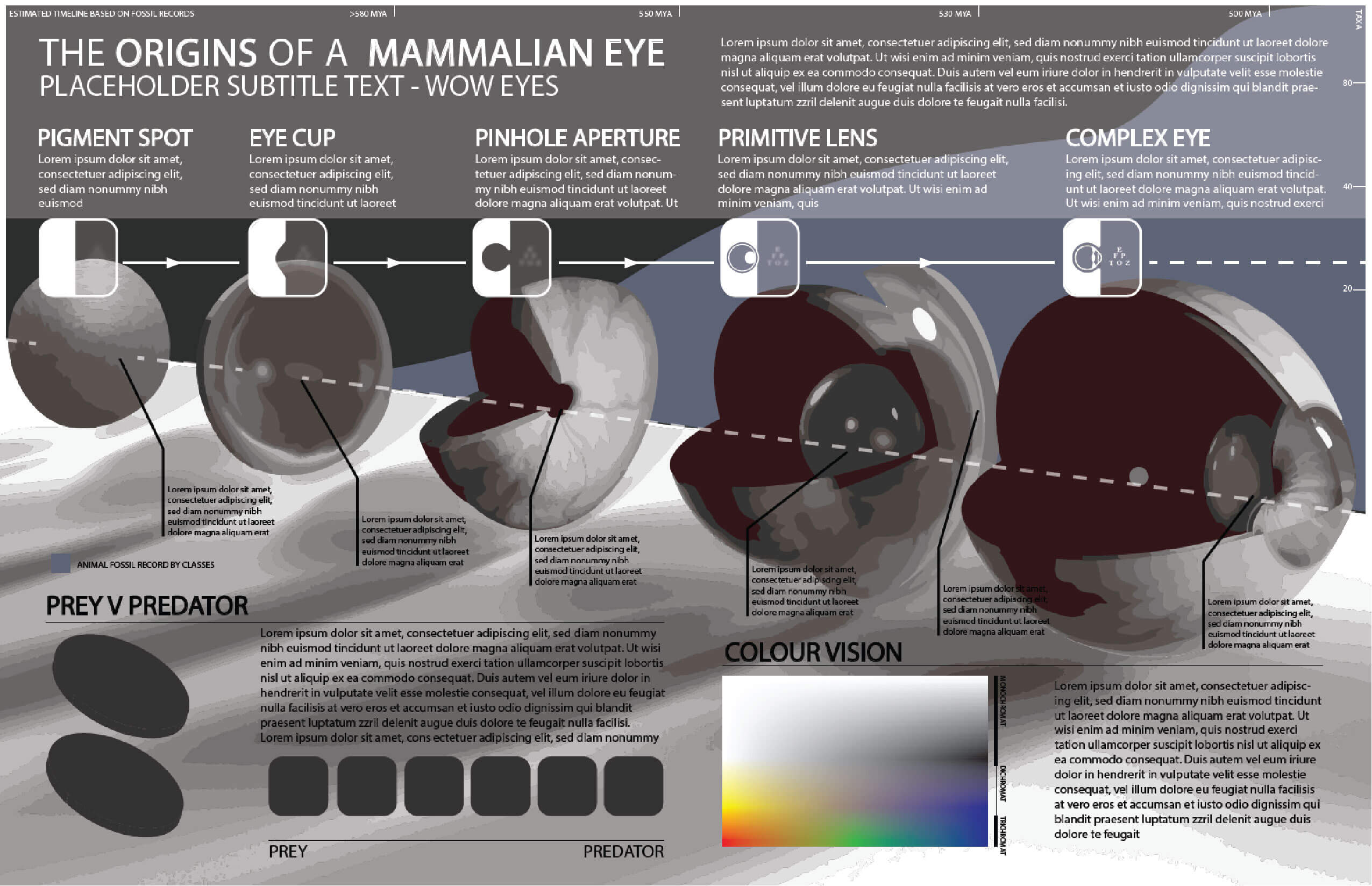


2D/3D Asset Creation & Final Render
Several visualizing elements were included in this graphic, including 2D illustrations of sample organisms drawn in Procreate and 3D models created with Blender 3D. Other details include the Snell chart representation of each organism's vision, the timeline indicating approximate evolutionary timepoints, and the phylogenetic tree indicating how the Cambrain explosion might correlate with the evolution of the eye. A final 2-page spread layout was also rendered with Blender 3D to visualize how the final product might look in a Scientific magazine.
2D/3D Assets and Final Mockup
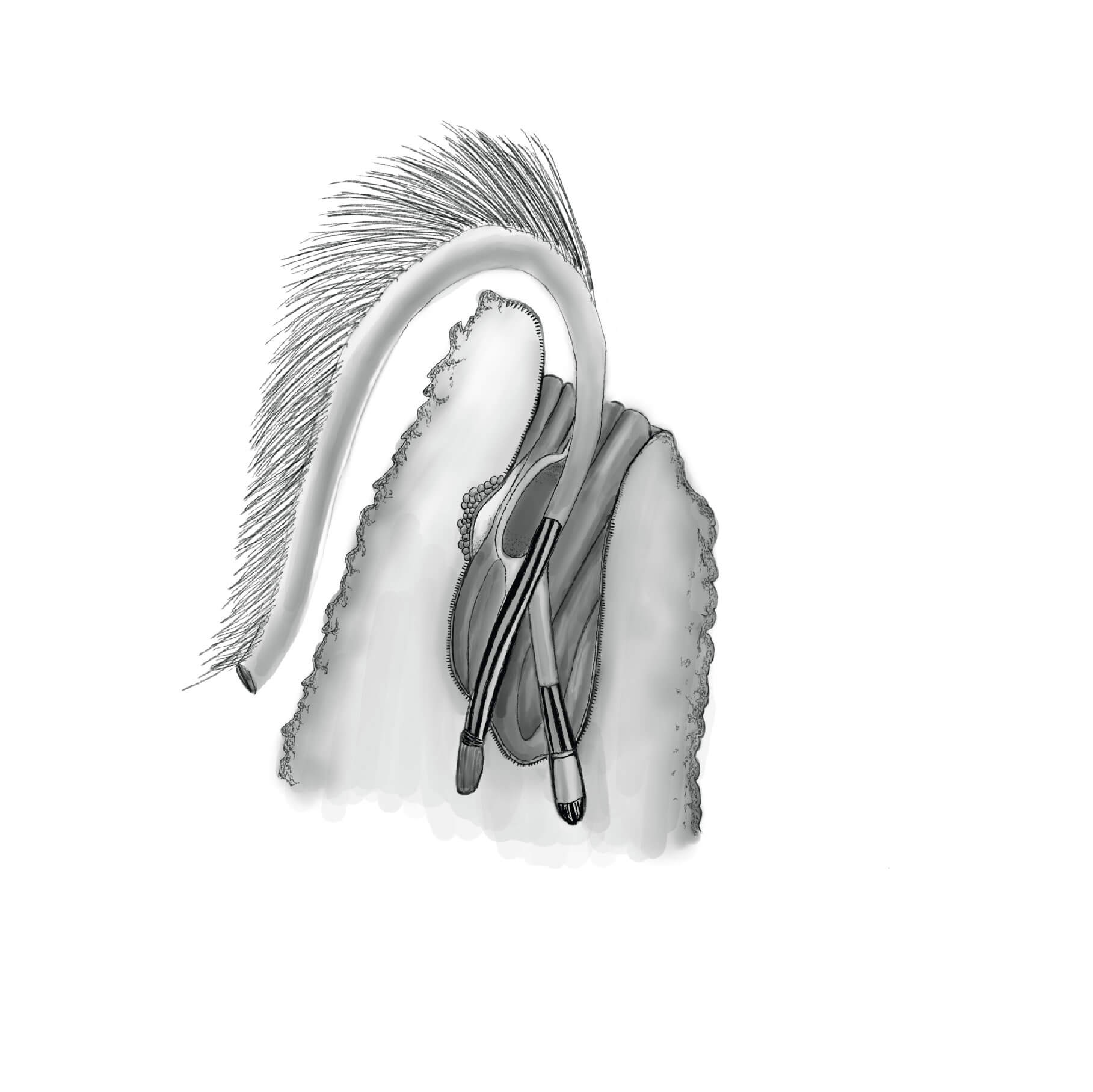
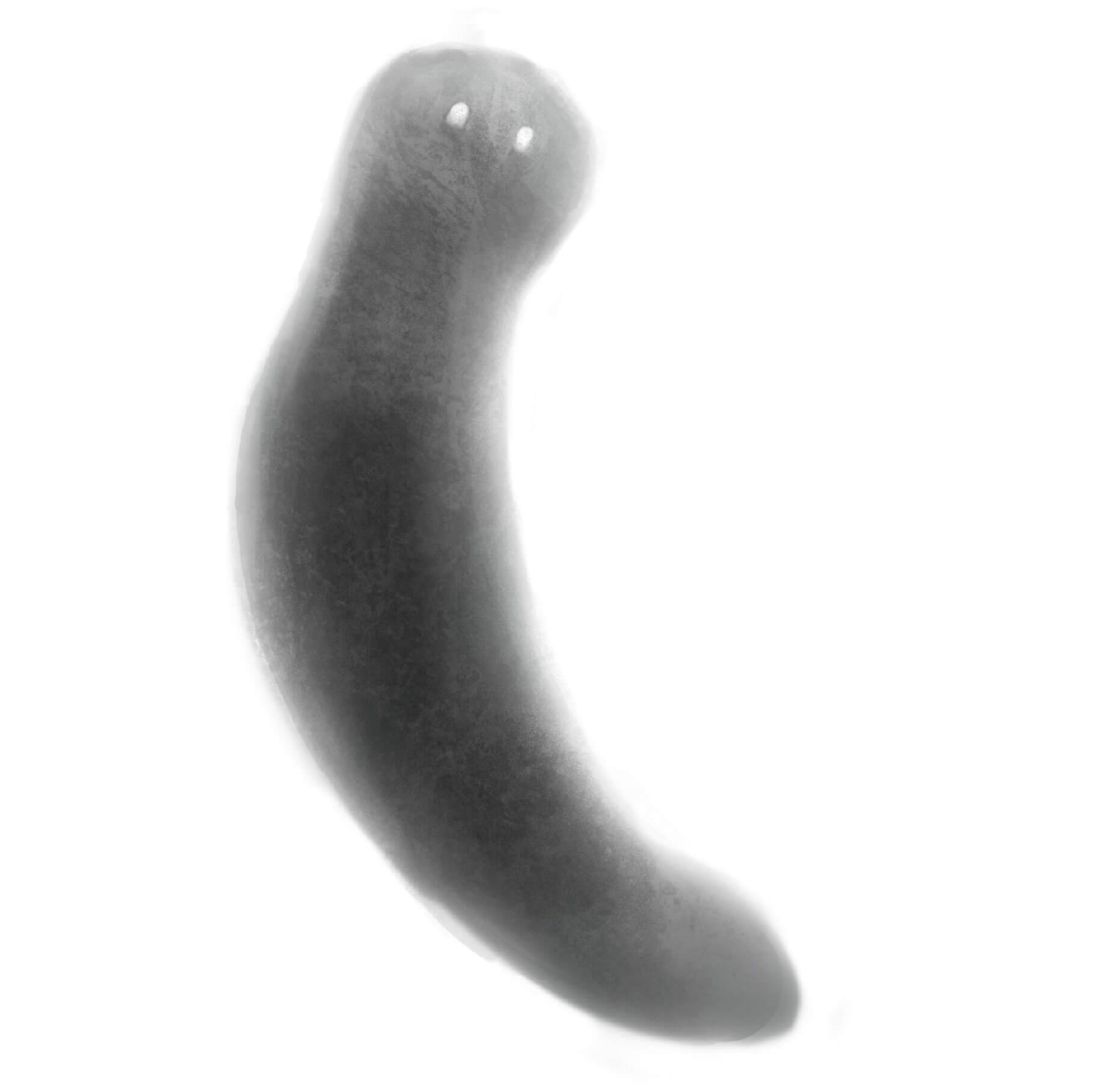
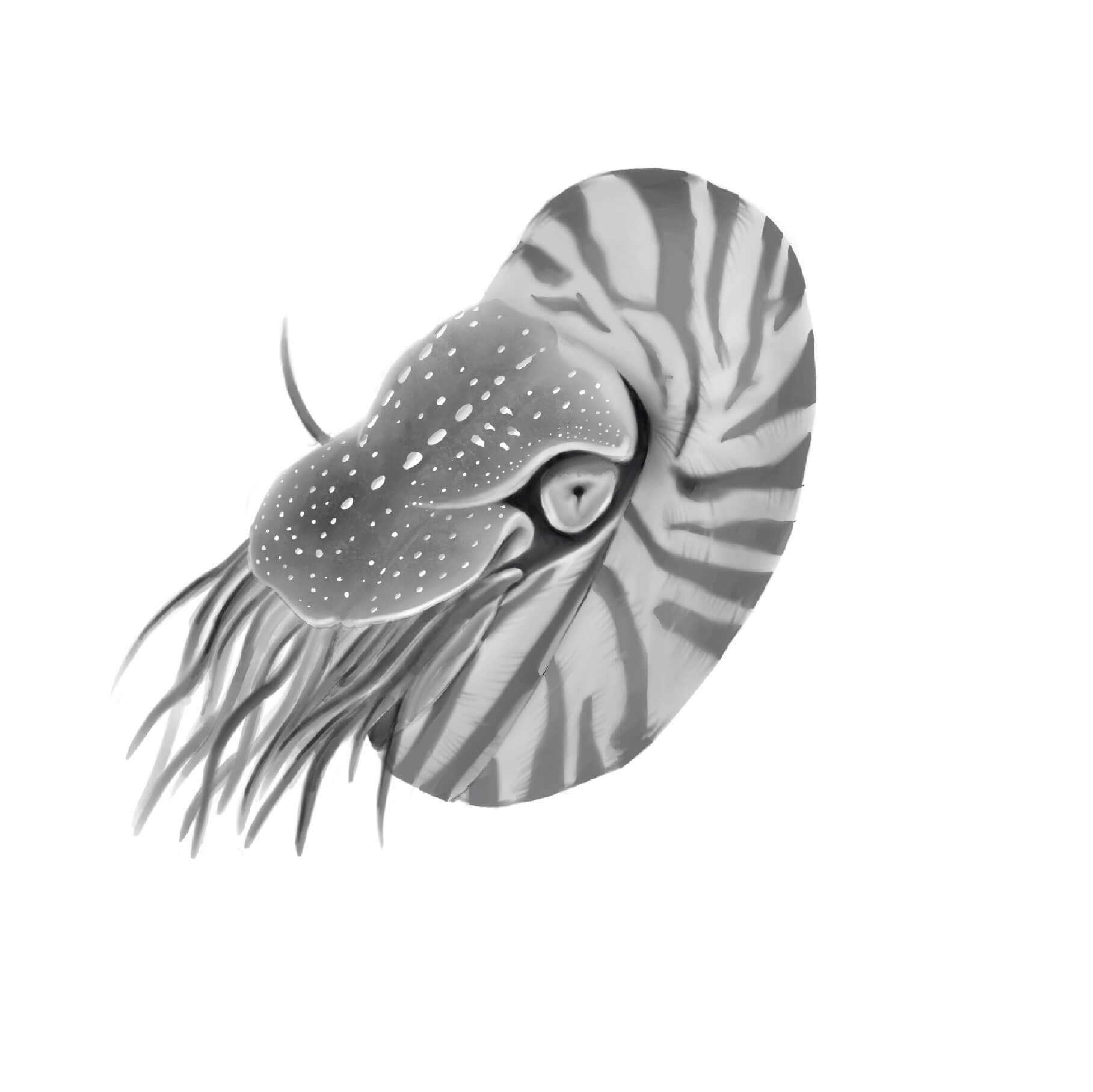

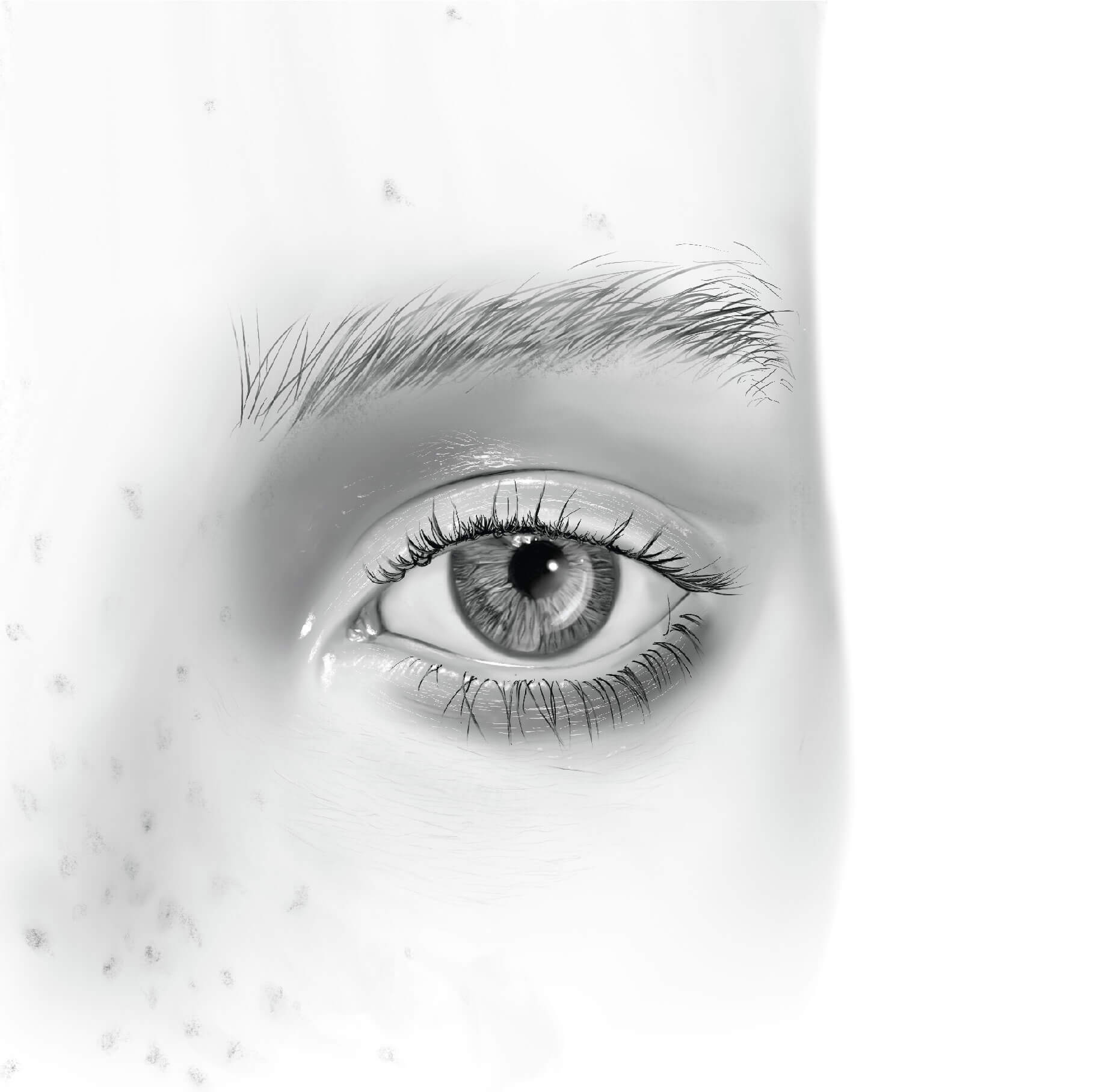
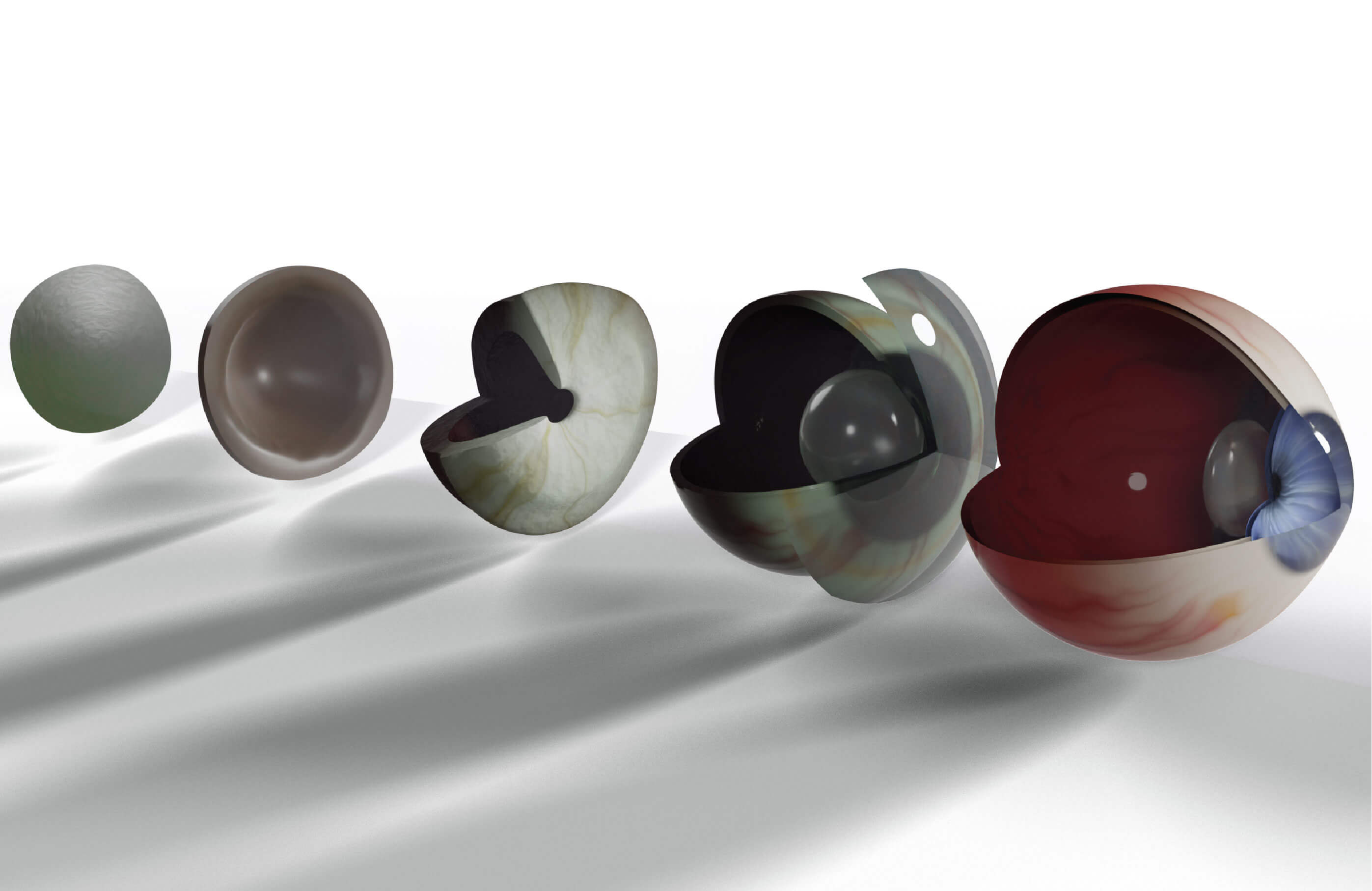
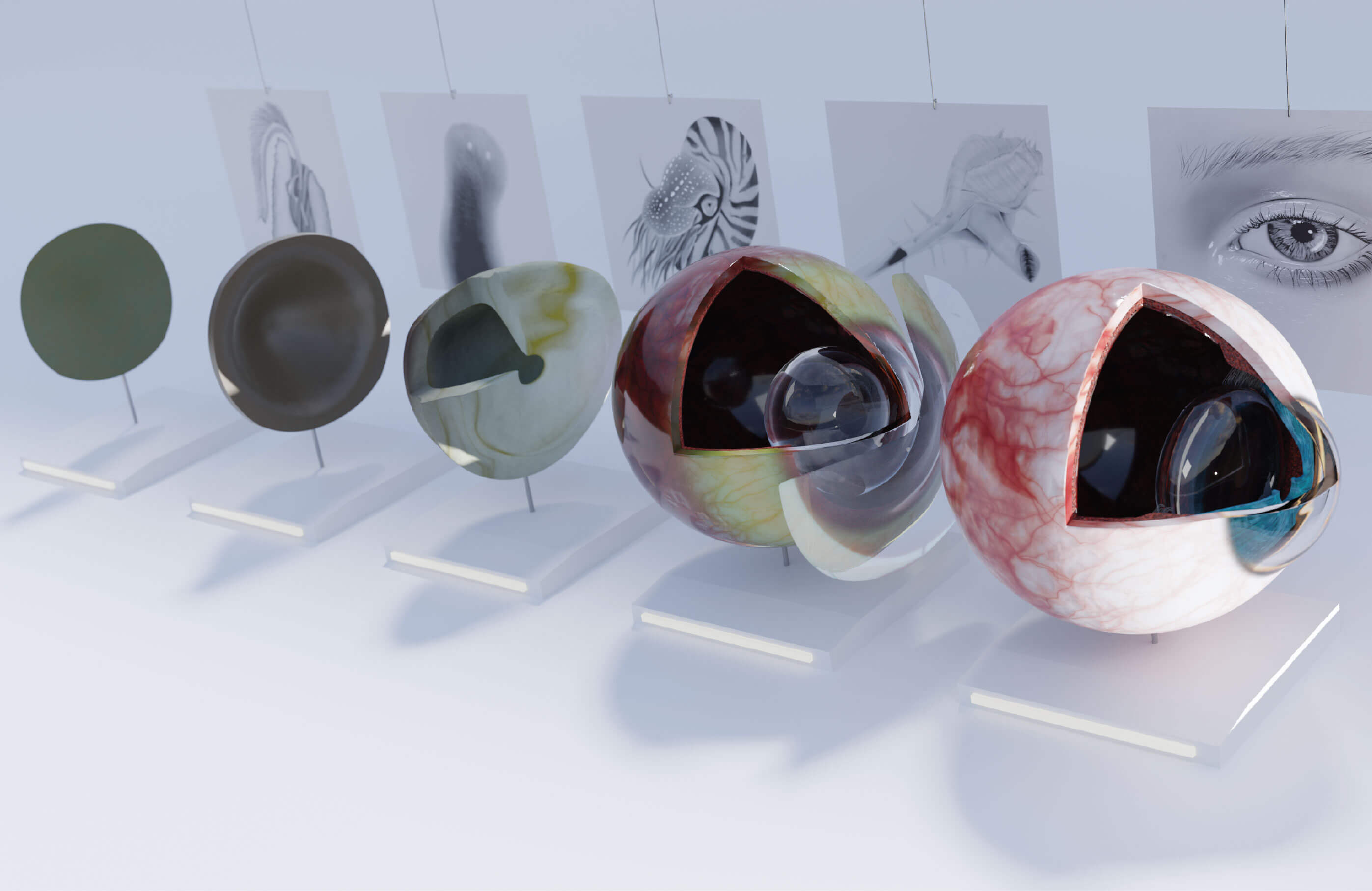
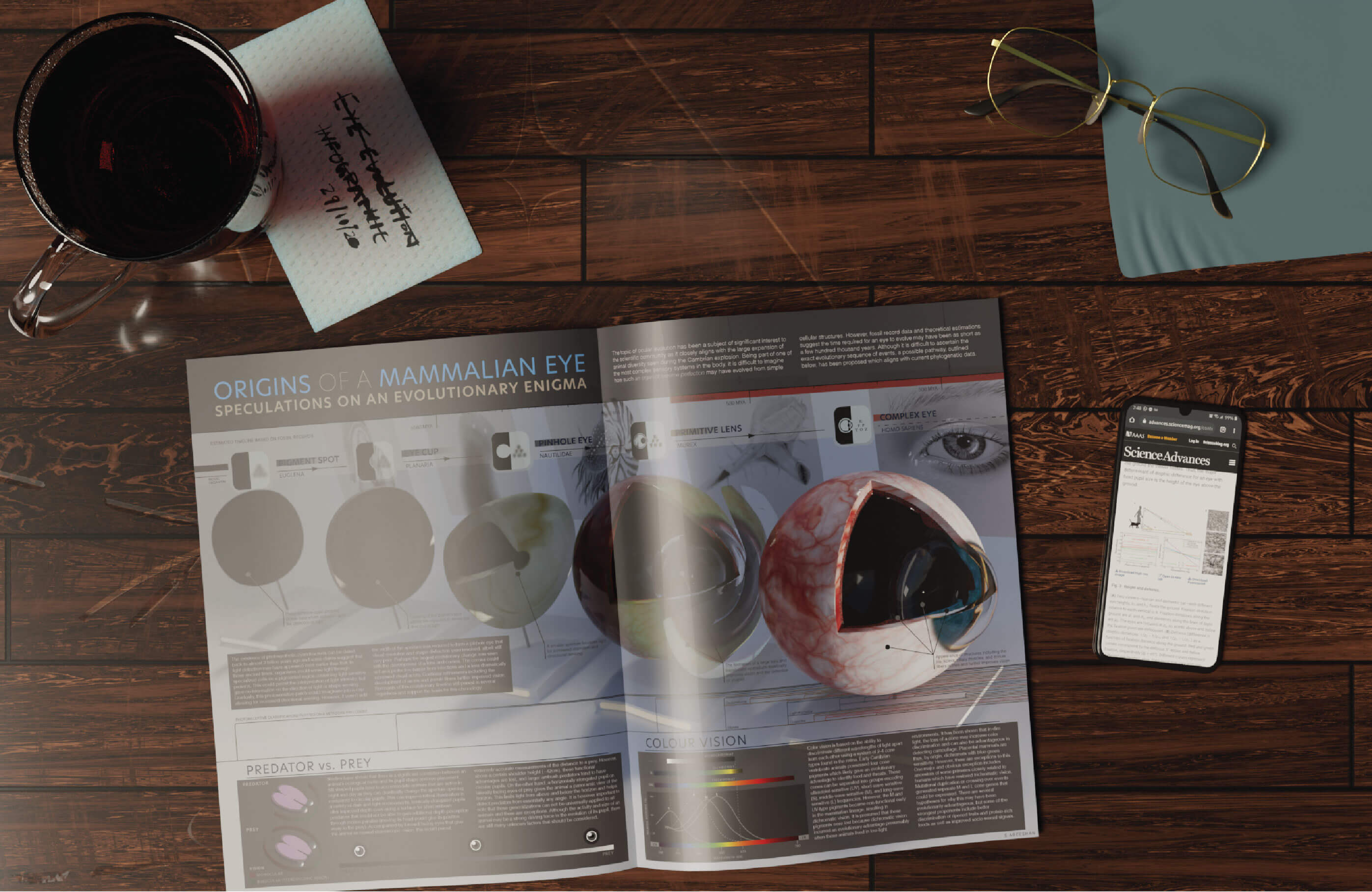
References
- Banks, M. S., Sprague, W. W., Schmoll, J., Parnell, J. A. Q., & Love, G. D. (2015). Why do animal eyes have pupils of different shapes? Science Advances. https://doi.org/10.1126/sciadv.1500391
- Briggs, D. E. G. (2015). The Cambrian explosion. In Current Biology. https://doi.org/10.1016/j.cub.2015.04.047
- Carvalho, L. S., Pessoa, D. M. A., Mountford, J. K., Davies, W. I. L., & Hunt, D. M. (2017). The genetic and evolutionary drives behind primate color vision. In Frontiers in Ecology and Evolution. https://doi.org/10.3389/fevo.2017.00034
- Darwin, C. (1859). On the Origin of the Species. In Darwin.
- Gebeshuber, I. C., Aumayr, M., Hekele, O., Sommer, R., Goesselsberger, C. G., Gruenberger, C., Gruber, P., Borowan, E., Rosic, A., & Aumayr, F. (2010). Bacilli, green algae, diatoms and red blood cells-how nanobiotechnological research inspires architecture. In Bio-Inspired Nanomaterials and Nanotechnology.
- Jacobs, G. H. (2009). Evolution of colour vision in mammals. In Philosophical Transactions of the Royal Society B: Biological Sciences. https://doi.org/10.1098/rstb.2009.0039
- Lamb, T. D., Pugh, E. N., & Collin, S. P. (2008). The Origin of the Vertebrate Eye. Evolution: Education and Outreach. https://doi.org/10.1007/s12052-008-0091-2
- Land, M. (n.d.). Evolution of Eyes. https://www.britannica.com/science/photoreception/Evolution-of-eyes
- No Title. (n.d.-a). https://web2.ph.utexas.edu/~coker2/index.files/eyebrain.htm
- No Title. (n.d.-b). https://www.shutterstock.com/image-vector/planaria-flatworm-illustration-drawing-engraving-ink-1199727406
- Osorio, D., & Vorobyev, M. (2008). A review of the evolution of animal colour vision and visual communication signals. Vision Research. https://doi.org/10.1016/j.visres.2008.06.018
- Schwab, I. R. (2018). The evolution of eyes: Major steps. the Keeler lecture 2017: Centenary of Keeler Ltd. Eye (Basingstoke). https://doi.org/10.1038/eye.2017.226
- Special snails and strange worms on Changi. (2008). https://wildfilms.blogspot.com/2008/08/special-snails-and-strange-worms-on.html
- The Nautilus at Risk. (2016). https://loe.org/shows/segments.html?programID=16-P13-00026&segmentID=3
- Troscianko, J., Wilson-Aggarwal, J., Griffiths, D., Spottiswoode, C. N., & Stevens, M. (2017). Relative advantages of dichromatic and trichromatic color vision in camouflage breaking. Behavioral Ecology. https://doi.org/10.1093/beheco/arw185
- Ulrike Griebel. (2002). Color Vision in Marine Mammals: A Review. In The Vienna School of Marine Biology: A Tribute to Jörg Ott.
- Vaulin, M. (2020). No Title. https://www.artstation.com/artwork/Oy8bme
- Williams, D. L. (2016). Light and the evolution of vision. Eye (Basingstoke). https://doi.org/10.1038/eye.2015.220